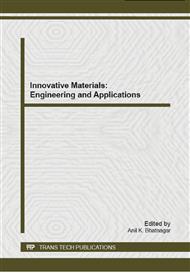p.155
p.163
p.169
p.173
p.181
p.188
p.193
p.198
p.203
Influence of the Surfaces Characteristics on the Luminescent Property of Porous Silicon
Abstract:
Photoluminescence of porous silicon (PS) prepared by different etched time was studied. The photoluminescence might originate from the recombination of carriers and surface states, which was proved by FTIR, Raman spectroscopy and SEM. Furthermore, the hydrogen-related groups on the PS surface could eliminate the surface states for the blue emission, but the quantities of surface states for the green emission were depended on the uncovered area on the PS surface. Moreover, the shape of photoconductivity curve was depended on the quantities of the surface states, which also was related to the uncovered area on the PS surface. In addition, the results of the microwave-detected photoconductivity decay measurement indicated thatthe defects on the PS surface increased with the increase of the etched time, which would be related to the increase of the depth of pores.
Info:
Periodical:
Pages:
181-187
Citation:
Online since:
October 2014
Authors:
Price:
Сopyright:
© 2014 Trans Tech Publications Ltd. All Rights Reserved
Share:
Citation:


